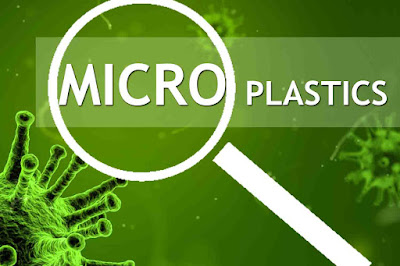If there is anything other than Climate change that is posing a threat to biosphere, it is Plastic. From the packaging of food we eat to the smart phone we use, Plastic has became a integral part of modern day Human. According to an estimate, Plastic global production has been increased from 1.5 million tonnes during 1950s to 288 million tonnes in 2012 (PlasticsEurope). Microplastics are minute plastic particles which are formed due to the degradation of larger plastic. Research work has been extensively carried out from past decade to determine whether microplastics are superficial or substantial.
What are Microplastics?
Minute sized plastics are termed as microplastics and the size range is varied among different researchers. While some set the upper limit as 1 mm, some define particles less than 5 mm as microplastics. These particles have reached higher densities and interacting with aquatic life. The main sources of these microplastics are the plastic debris which disintegrate into these minute particles (Secondary microplastics). Apart from the break down of large plastics, researchers reported that the microplastic particles present in cosmetics, pellets fro manufacturing and microplastic fibres that are retained during sewage treatment join waste water and then marine waters (Primary microplastics). In a research study carried out by Browne.M, it is found that washing of clothes (78% polyester, 9% polyamide, 7% polypropylene, 5% acrylic) is accounted for the microplastic presence in waste water rather than cleansing products. So, one sources of microplastics is due to the synthetic fibers in textiles.
Microplastics and Marine waters
75% of the shoreline debris is contributed by plastic according to a report. In Tamar estuary (United Kingdom), Plastics of size less than 1mm accounted fro almost 65% of the total marine debris.
The fact is that the secondary sources of microplastics cannot produce microplastics in marine environment as the plastics require sunlight (photo-degradation of plastics). While the microplastics used in cosmetics and other primary sources enter marine waters through domestic or industrial drainage system, the source of fragmentation of macroplastics to microplastics (secondary sources) is the shoreline plastic debris and textile fibers from sewage. Despite the fact that the microplastics of so minute size cannot be quantified, researchers used various techniques like beach combing, sediment sampling, marine trawls, and biological sampling to identify the quantities of marine microplastics.
36.5% of the fishes tested for microplastics in English channel and 35% of fish tested in north pacific Central Gyre reported positive. Even though microplastics are detected, it is reported that there is no significant effect on ingestion process of fishes. Scientists also examined the ingestion of microplastics by Zooplanktons (Jean-Pierre).
Is Deep sea a sink for microplastics?
Yes, microplastics are reported to be found in deepest of the oceans ranging from 1100 m to 5000 m (LISBETH VAN). From the very recent study by Lucy C. Woodall, it is reported that microplastics are 4 times more abundant in deep sea sediments from Atlantic ocean, Mediterranean sea and Indian ocean than in contaminated sea-surface waters. It is likely that the deep sea is the sink for this debris (L.Woodall).Coral Reefs are no exemption
N.M Hall reported the microplastic ingestion by corals in coral reef waters adjacent to Australia's great barrier reef. This study revealed that reef-building corals capture and ingest microplastics from water column and this raises a serious concern of plastics impeding the natural digestion capacity of corals.What can be done?
To mitigate the microplastic flow from sewage water, M.Browne suggested to adopt Ultrafiltration during sewage treatment as it not lesser fibers to pass to downstream.
Microplastics and Fresh water
Melissa B. Phillips conducted a study on microplastic presence in Gulf of Mexico. Among the 535 fished tested, 8% of fresh water fishes and 10% of marine fishes (samples from Gulf of Mexico estuary). This study analyzed the presence of microplastics but did not report any health effects on fishes. A similar study was conducted in the surface waters of the Laurentian Great lakes of US to identify the sources of microplastics (M. Eriksen)
Are they really harmful?
G. Allen Burton in his recent viewpoint names microplastics concerns as misperception resulted because of misinformation. Burton argues that microplastics pose no threat and suggests to abandon the research work on them. Read this scientific opinion to get a better idea on whether microplastic research to be continued or to be abandoned.
Despite of this, it is reported in several studies that microplastics consist of synthetic organic polymers that act as transport medium for POPs (Persistent Organic Pollutants) (Rochman – 2013). So, a further research into this may drive the community towards one conclusion.
